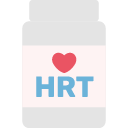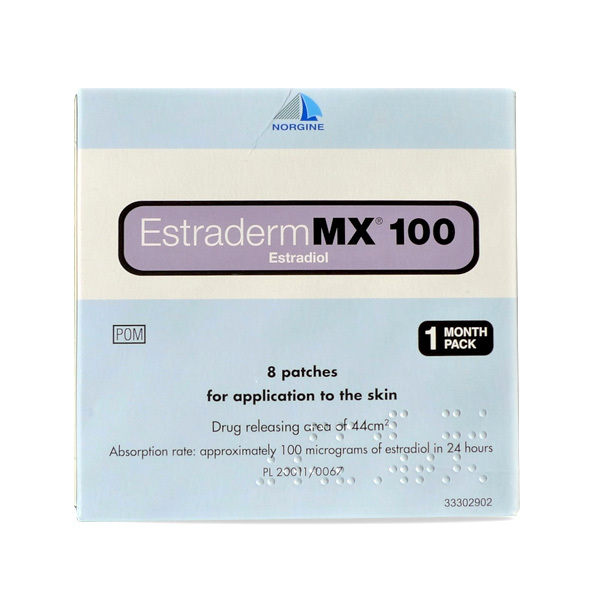| 8 patches Estraderm Patches | £24.05 |
| 16 patches Estraderm Patches | £31.20 |
| 24 patches Estraderm Patches | £38 |
Estraderm Patches

Hormone replacement therapy (HRT) for oestrogen deficiency symptoms in postmenopausal women [at least 6 months since last menses].

Like any other prescription medication you must consult a doctor before using it. PrivateDoc offers a confidential free consultation service that may result in you receiving a prescription for Estraderm Patches if it is deemed appropriate and Estraderm Patches can prescribed safely.

Complete a 100% free and secure consultation to explore your treatment options. How our online prescription consultation works.
What are Estraderm Patches?
Estraderm Patches are used for Hormone replacement therapy (HRT) for oestrogen deficiency symptoms in postmenopausal women [at least 6 months since last menses].
Prevention of osteoporosis in postmenopausal women at high risk of future fractures who are intolerant of, or contraindicated for, other medicinal products approved for the prevention of osteoporosis
How do you use Estraderm patches?
Estraderm patch’s are applied to the skin twice weekly. Estraderm should be applied to the skin as soon as it is removed from the wrapper. Recommended application sites are on clean, dry, healthy, intact skin and each application should be made to a slightly different area of skin on the trunk below waistline. Estraderm should not be applied on or near the breasts.
Estraderm should remain in place during bathing and showering. Should it fall off during bathing or showering the patient should wait until cutaneous vasodilation ceases before applying a replacement patch to avoid potential excessive absorption. Should a patch fall off at other times it should be replaced immediately.
Patients can be advised to use baby oil to help remove any gum/glue which may remain on their skin after patch removal.
Read the Patient Information Leaflet
Pregnancy and lactation
Pregnancy:
- Estraderm MX is not indicated during pregnancy. If pregnancy occurs during medication with Estraderm MX treatment should be withdrawn immediately.
- The results of most epidemiological studies to date relevant to inadvertent foetal exposure to oestrogens indicate no teratogenic or foetotoxic effects.
Lactation:
- Estraderm MX is not indicated during lactation.
Side effects
Very common (1 in 10 people or more):
- Irritation, redness, bleeding or discomfort in the area where the patch has been applied, breakthrough bleeding, or tenderness or soreness in the breasts.
Common (1 in 10 people or less):
- Nausea, bloatedness, or headaches.
Uncommon (1 in 100 people or less):
- Breast cancer.
Rare (1 in 1,000 people or less):
- Fluctuations in weight, dizziness, pain in legs, or fluid retention in the legs or ankles
Very rare (1 in 10,000 people or less):
- Changes in skin pigmentation, itches and rashes over large areas of the skin, jaundice, abnormal liver function test results, blood clots, bruising, worsening varicose veins, or heightened blood pressure.
- Other side effects can include dry eyes and irritation while using contact lenses
This is only a summary, please refer to patient information leaflet provided or link below for comprehensive list. Patient Information Leaflet
Get Started How much do Estraderm Patches cost?Contraindications
Estraderm MX should not be used by women with any of the following conditions:
- Known, past or suspected breast cancer
- Known or suspected oestrogen-dependent malignant tumours (e.g. endometrial cancer)
- Undiagnosed genital bleeding
- Untreated endometrial hyperplasia
- Previous or current venous thromboembolism (deep venous thrombosis, pulmonary embolism)
- Known thrombophilic disorders (e.g. protein C, protein S, or antithrombin deficiency, see section 4.4)
- Active or recent arterial thromboembolic disease (e.g. angina, myocardial infarction)
- Acute liver disease, or a history of liver disease as long as liver function tests have failed to return to normal
- Known hypersensitivity to the active substance or to any of the excipients
- Porphyria
Meet our team
PrivateDoc is happy to introduce you to some of our leading UK licensed clinicians.








